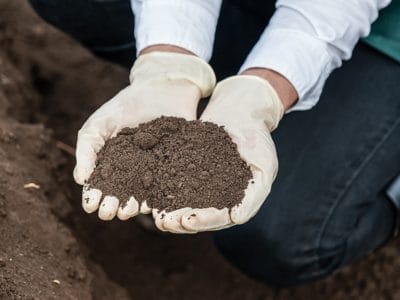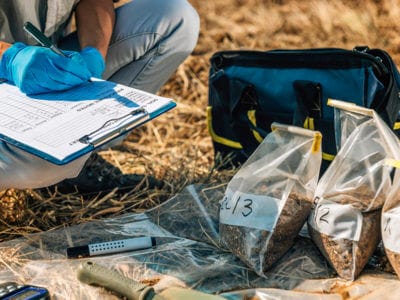
Soil Remediation
PIDs are quick, simple to use and accurate for the detection of a wide range of contaminants
Remediation can vary from removal of all contaminated materials, through using various chemical and biological treatments for contaminated soil and groundwater, to leaving contamination in place and containing it, or monitoring its dispersion. Timescales can take anything from several days or weeks to several years, and costs can be dramatically different depending on the type of techniques used.
VOCs In Soil Remediation – A Buyers Guide To Measuring
The photoionization detector is an efficient and inexpensive detector for many gas and vapor analytes.
Although PIDs cannot be used to measure VOCs in soil (or water) directly, the VOC concentration can be determined indirectly using headspace analysis. Soil (or water) is collected in a part-filled, sealed jar and allowed to stabilize at room temperature. Any VOCs present will volatile (evaporate) and concentrate on the ‘headspace’ leading to a positive reading on the PID.
- PIDs are quick, simple to use, and accurate for the detection of a wide range of contaminants
- PIDs are very sensitive to commonly found solvents such as carbon tetrachloride but will detect hundreds
of gasses and vapors in low concentration - PIDs are battery-powered and portable, ideal for field use
”Typical photoionisation detectors measure volatile organic compounds and other gases in concentrations from sub parts per billion to 10 000 parts per million (ppm). The photoionisation detector is an efficient and inexpensive detector for many gas and vapour analytes.
Wikipedia
Measurement of Photoionization Detection (PID)
Manufacturers tend to offer variants of the same instrument differentiated by functionality and/or performance to suit different budgets but here are some important considerations:-
- Choice of UV lamps – 10eV required if benzene is a particular problem, otherwise choose the standard 10.6 eV.
- Battery life – look for at least a 24 hour run time.
- Battery type – look for rechargeable but is there a ‘dry cell’ backup?
- Sensitivity – look for a minimum 0.1 ppm (100 ppb) but ideally 1 ppb
- Fast response and clear downtime – this should be around 2 seconds
- Upper range – 20,000 ppm is possible but 5000 ppm will suffice (and save money but look out for compromises that may otherwise be useful)
- Ease of calibration and maintenance
- How does the PID deal with humidity?
PIDs are an essential tool for Environmental Consultants and other professionals who undertake field investigations of contaminated land or during soil remediation. They are simple to use and provide quick, accurate results but care must be taken to ensure that they have the ability to deal with humidity which would otherwise cause false readings. Portability and long battery life are other important considerations.
Download our FREE Guide
“VOCs In Soil Remediation – A Buyers Guide To Measuring”
The VOCs in soil remediation – a buyers guide to measuring guide which can be downloaded below provides the reader with an in-depth balance of knowledge regarding the benefits of using photoionization detectors within soil remediation. PIDs are an essential tool for Environmental Consultants and other professionals who undertake field investigations of contaminated land or during soil remediation.



















